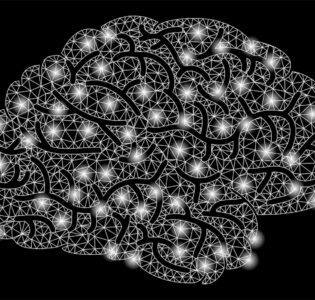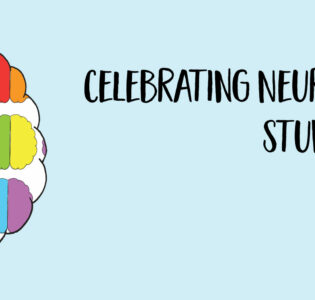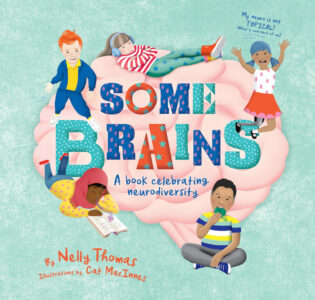Siena Castellon
Siena Castellon is an inspirational young woman from the UK who is making a real difference in promoting understanding of neurodiversity. We asked Siena about her experiences, Neurodiversity Celebration Week and her new book.
Tell us about yourself
My name is Siena Castellon. I live in London, England. I am a 17-year old neurodiversity advocate. I am autistic, dyslexic and dyspraxic. I also have ADHD.
When I was growing up I found that I was unable to find any resources specifically written for children who are autistic or have learning differences. I found that all the resources were aimed at parents or teachers. I decided to change this. When I was 13, I created – www.QLMentoring.com – a website designed for kids like me on which I share the tips and tricks I use to succeed in school. Since creating the website, I have written dozens of blogs for various charities and frequently give talks at schools, universities and even in Parliament on how to support neurodivergent students.
Most recently, I appeared in a new Netflix Carmen Sandiego series featuring fearless kids around the world. My segment highlights my Neurodiversity Celebration Week campaign and my commitment to change negative perceptions and stereotypes that others may have about people who are different.
In addition to being a neurodiversity advocate, I am also a huge math and physics geek. I am currently applying to universities where I hope to study physics and materials science.
When were you diagnosed and what were the toughest challenges?
I was diagnosed in round about ways. I was diagnosed with dyspraxia (developmental co-ordination disorder) when I was eight. Immediately, after starting at a new school, my teacher noticed I was alarmingly clumsy and uncoordinated. Being diagnosed as dyspraxic came as a huge relief. After years of being scolded by my PE teachers for not making enough effort and being humiliated on Sports Day by being the last in every event, I finally had an explanation.
I was diagnosed at being dyslexic when I was ten. I had always inverted by letters and numbers and had poor spelling, despite always getting 100% on my weekly spelling tests. My teachers insisted I couldn’t be dyslexic, because I could read. Instead, I was told I was careless and lazy. It took one amazing teacher to recognize that things weren’t adding up and that I had actually visually memorised the words I was believed to be “reading.”
I was diagnosed as autistic when I was 12, after years of being called shy and timid. In reality, I was keeping to myself, because I was observing and learning the codes of behavior that were a mystery to me. As is typical of autistic girls, I became skilled at pretending to be “normal.” It was a pain management specialist who was helping me to learn to tolerate my sensitivities to loud noise and touch that first suggested I could be autistic. In hindsight, it was as clear as day. Unfortunately, it is still unusual for girls to be identified as autistic, because many people still view autism as something that only affects boys.
I was diagnosed as having ADHD when I was 15. I had always struggled to focus, had poor time management skills and had been accused of being a day dreamer. I had come to believe that these symptoms were due to my autism, dyslexia or dyspraxia. However, I happened to read an article about ADHD, which stated that approximately 30% of autistic individuals also have ADHD. When I read the symptoms of ADHD, all the pieces came together.
I have since learned that autism and learning differences rarely occur in isolation. If you are diagnosed as autistic or as having a learning difference, it is important to explore whether you could have other learning differences too.
The toughest challenge was coming to terms with the fact that I am different and that these differences mean that the school and classroom environment can be a challenging environment. Children like me have to work a lot harder to overcome obstacles that other students don’t have to face. At times, this can feel a bit unfair and be disheartening. But I’ve learned that there are also many strengths and benefits to being neurodivergent and that some of the people who have made the greatest contribution to society and revolutionized the world we live in are thought to have been neurodivergent. So, now I am proud of being different.
What inspired you to get involved in social action for autism and learning differences?
I’ve been bullied at school for most of my life. I’ve had to leave three schools due to bullying and was even home-educated for a few months. Being bullied is a very traumatic and isolating experience. When I learned that approximately 75% of autistic students report being bullied, I felt I had to do something to change this. One of the reasons I launched Neurodiversity Celebration Week is to encourage students to view neurodivergent students from a different perspective. I believe that addressing some of the misconceptions and stereotypes that students have about individuals who are autistic or have learning differences, will help students to be more empathetic and understanding towards people who are different.
You have spoken about ‘flipping the narrative’ with your campaign for Neurodiversity Celebration Week. What does this mean and what is the week about?
Much too often, schools try to help autistic students and students with learning differences by focusing on addressing their challenges and weaknesses. This can be a bit demoralising, because it can feel as if we are broken and in need of being fixed. Although it is important to support our challenges and weaknesses, it is also important that we be seen as more than just our deficits. My Neurodiversity Celebration Week campaign seeks to flip the narrative so that schools also recognise and celebrate our strengths and talents.
Neurodivergent individuals have many talents, including being creative, innovative, thinking outside the box, problem solvers and skilled at pattern recognition. Although these skills are rarely tested in the classroom, they are a huge advantage in the workplace. It is estimated that 35% of entrepreneurs in the United States are dyslexic. It is estimated that the majority of Silicon Valley is autistic. I think it’s important for neurodivergent students to know that irrespective of the struggles they face at school, in the right environment they can be incredibly successful. I think that one way of conveying this message is by putting up posters of well-known neurodivergent individuals who struggled in school and went on to become trailblazers in their chosen careers. I have created lots of positive posters that are available to be downloaded on www.neurodiversity-celebration-week.com.
How can schools get involved?
Schools can get involved by registering on the Neurodiversity Celebration Week website. I will then add the school to the list of participating schools. There are currently over 380 schools and over 330,000 students taking part from around the world. If the school has a Twitter account, I will announce that it has signed up to take part in Neurodiversity Celebration Week. For any questions or suggestions, I can be contacted on [email protected].
Schools can choose how they wish to celebrate. Some schools have held neurodiversity-themed assemblies in which speakers have come to talk about how their difference was advantageous in their career. Schools can also put up posters and showcase the talents of their neurodivergent students. The sky is the limit!
What do you think is needed most to support neurodivergent students in schools?
Compassion and understanding. Much too often, people assume the worst and jump to conclusions. I think it is important for teachers and parents to remember that spending the day in an environment where you are required to use skills that are much more challenging for you than they are for everyone else, is exhausting and can be demoralising. No one likes to fail or to be mediocre. It takes a lot of courage and strength of character to keep trying and to persevere. I think teachers and parents should acknowledge this once in a while.
You are about to release a book! Can you tell us about it?
I have written a book for autistic teen girls titled The Spectrum Girl’s Survival Guide: How To Be Awesome and Autistic. The book is being published by Jessica Kingsley Publishing and will be out in March 2020. The book will have a foreword by the awesome Dr Temple Grandin and will be illustrated by Rebecca Burgess, an autistic artist. It was important to me that everyone that worked on the book be female and autistic. The book is the type of book I wish had been available when I was growing up. Unfortunately, the books I found were written with autistic boys in mind or written by non-autistic adults. In the survival guide, I cover topics that are unique to autistic girls, such as masking, managing sensory issues and social anxiety. I also provide information and advice about how to navigate social media, dating, friendships, managing emotions and many other relevant topics.
What are your top tips for girls with autism?
My top tip to all the autistic girls out there is to embrace who you are. Don’t be afraid to be different. There is only one of you and you are awesome just the way you are.
Website www.neurodiversity-celebration…
www.qlmentoring.com
Twitter @NCweek
@QLMentoring




